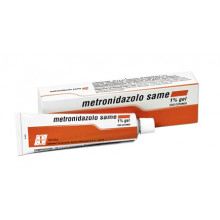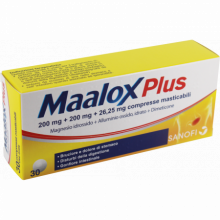BETADINE * 10CPR VAG 200MG
Therapeutic indications
Betadine 0.2 g Vaginal Tablets, Betadine 10% Vaginal Gel:Disinfection of the vaginal mucosa.
Dosage and method of use
Betadine 0.2 g Vaginal Tablets:1-2 tablets, preferably in the evening. It is advisable to moisten the tablet with a little water, to insert deeply and to remain in the supine position for a few minutes.Betadine 10% Vaginal Gel:One spm application preferably in the evening before going to bed. It is advisable to insert deeply and to remain supine for a few minutes. How to use: - screw the threaded end of the syringe to the tube and pull the plunger up to the stop notch - fill the syringe completely by pressing on the tube and then remove the syringe - insert the syringe deeply into the vagina and deposit the gel in the cervical region - remove the emptied syringe which, after washing, can be used for subsequent applications. The content of the syringe, equal to one dose, is 5 g of product, corresponding to 0.5 g of povidone iodine and 50 mg of iodine.
Contraindications
• Hypersensitivity to the active substance or to any of the excipients listed in section 6.1. • Hyperthyroidism
Side effects
Undesirable effects are classified according to their frequency: Very common (≥ 1/10) Common (> 1/100 a Immune system disorders Rare: Hypersensitivity Very rare: Anaphylactic reactionEndocrine pathologiesVery rare: Hyperthyroidism * (sometimes with symptoms such as tachycardia or agitation) Not known: Hypothyroidism ***Metabolism and nutrition disordersNot known: Electrolyte imbalance **, Metabolic acidosis **Skin and subcutaneous tissue disordersRare: Contact dermatitis (with symptoms such as erythema, microvesicles and pruritus) Very rare: AngioedemaRenal and urinary disordersNot known: Acute renal failure **, Abnormal blood osmolarity ** * In patients with a history of thyroid disease (see section Warnings and special precautions for use) following high iodine uptake, e.g. after long-term use of povidone iodine solution for the treatment of wounds and burns on large skin areas. ** May occur following uptake of high amounts of povidone iodone (e.g. in the treatment of burns) *** Hypothyroidism following prolonged or extensive use of povidone iodineReporting of suspected adverse reactionsReporting of suspected adverse reactions that occur after authorization of the medicine is important, as it allows continuous monitoring of the benefit / risk ratio of the medicine. Healthcare professionals are asked to report any suspected adverse reactions via the national reporting system at: http://www.agenziafarmaco.gov.it/content/come-segnalare-una-sospetta-reazione-avversa.
Special warnings
Do not use for prolonged treatments. Particular caution should be used in patients with pre-existing renal insufficiency who require regular applications of Betadine on damaged skin. The use, especially if prolonged, can give rise to sensitization phenomena. In this case, interrupt the treatment and adopt suitable therapeutic measures. Patients with goiter, thyroid nodules or other acute and non-acute thyroid disorders are at risk of developing thyroid hyperfunction (hyperthyroidism) following the administration of large amounts of iodine. In this patient population, the povidone iodine preparation should not be used for an extended period of time unless strictly indicated. Even after the end of treatment, early symptoms of possible hyperthyroidism should be sought and, if necessary, thyroid function should be monitored. Do not use at least 10 days before performing a scintigraphy or after radioactive iodine scintigraphy or in the treatment with radioactive iodine of thyroid cancer. The pediatric population has an increased risk of developing hypothyroidism following applications of high doses of iodine. Due to the permeability of the skin and their high sensitivity to iodine, the use of povidone iodine should be minimized in children. The child's thyroid function may need to be checked (e.g. T4 and TSH levels). Any oral ingestion of povidone iodine by the child should be avoided. In pediatric age use only under strict supervision and in cases of real need. The accidental ingestion or inhalation of some disinfectants can have serious and sometimes fatal consequences. Avoid contact with eyes.
Pregnancy and breastfeeding
During pregnancy and lactation, povidone iodine solution should only be used if strictly necessary and at the lowest possible dose, due to the ability of iodine to cross the placenta and to be secreted into breast milk and the high sensitivity of the fetus. and of the newborn to iodine. Furthermore, iodine is more concentrated in breast milk than in whey. The use of povidone iodine can cause transient hypothyroidism with increased TSH (thyroid stimulating hormone) in the fetus or neonate.
Expiration and retention
Betadine 10% Vaginal Gel:keep away from heat.Betadine 0.2 g Vaginal Tablets:store at a temperature not exceeding 30 ° C
Interactions with other drugs
Avoid the simultaneous use of other antiseptics and detergents. The polyvinylpyrrolidone-iodine complex is effective at pH values between 2.0 and 7.0. It is possible that the complex reacts with proteins or other unsaturated organic compounds, resulting in a reduction in its effectiveness. The concomitant use of preparations with enzymatic components for the treatment of wounds leads to a weakening of the effects of both substances. Povidone iodine should not be used simultaneously with products containing mercury salts or benzoin compounds, carbonates, tannic acid, alkali, hydrogen peroxide, taurolidine and silver. The use of povidone-containing products concomitantly with other octedin-containing antiseptics in the same or adjacent sites may cause a momentary darkening of the affected areas. The oxidative effect of povidone-iodine preparations may cause false positive results of some diagnostic laboratory tests (e.g. toluidine or guaiac gum tests for the determination of hemoglobin or glucose in faeces or urine). Avoid habitual use in patients concomitantly treated with lithium. Absorption of iodine from povidone-iodine solution may reduce thyroid iodine uptake. This can interfere with various tests (thyroid scintigraphy, determination of iodine-binding proteins, radioactive iodine diagnostics) and can make a planned treatment of the thyroid with iodine (radioactive iodine therapy) impossible. After the end of the treatment, an adequate period of time must elapse before performing a new scintigraphy.
Overdose
In the event of an overdose, whether intentional or accidental (very unlikely for pharmaceutical forms for vaginal use), hypothyroidism or hyperthyroidism may occur. Systemic absorption of iodine after repeated applications of the product on extensive wounds or severe burns can produce a range of symptoms such as: metallic taste, increased salivation, burning or stinging in the mouth and throat, irritation or swelling of the eyes, fever, rash skin, diarrhea and gastrointestinal disturbances, hypotension, tachycardia, metabolic acidosis, hypernatremia, renal failure, pulmonary edema and shock. In case of accidental ingestion of large quantities of product, institute symptomatic and supportive treatment with particular attention to the electrolyte balance and renal and thyroid function.
Active principles
Betadine 10% Vaginal Gel100 g of gel contain: Active ingredient: Iodopovidone (10% iodine) g 10.Betadine 0.2 g Vaginal Tablets1 tablet of 3 g contains: Active ingredient: Iodopovidone (10% iodine) 0.20 g. For the full list of excipients, see section 6.1.
Excipients
Betadine 0.2 g Vaginal Tablets:Polyethylene glycol 1000.Betadine 10% Vaginal Gel:Polyethylene glycol 400, Polyethylene glycol 4000, Polyethylene glycol 6000, Sodium hydrate, Purified water.

 Convenient and safe payments
Convenient and safe payments
 Shipping in 24h all over the world
Shipping in 24h all over the world
 Fast returns
Fast returns
 Pharmaceutical experience
Pharmaceutical experience











